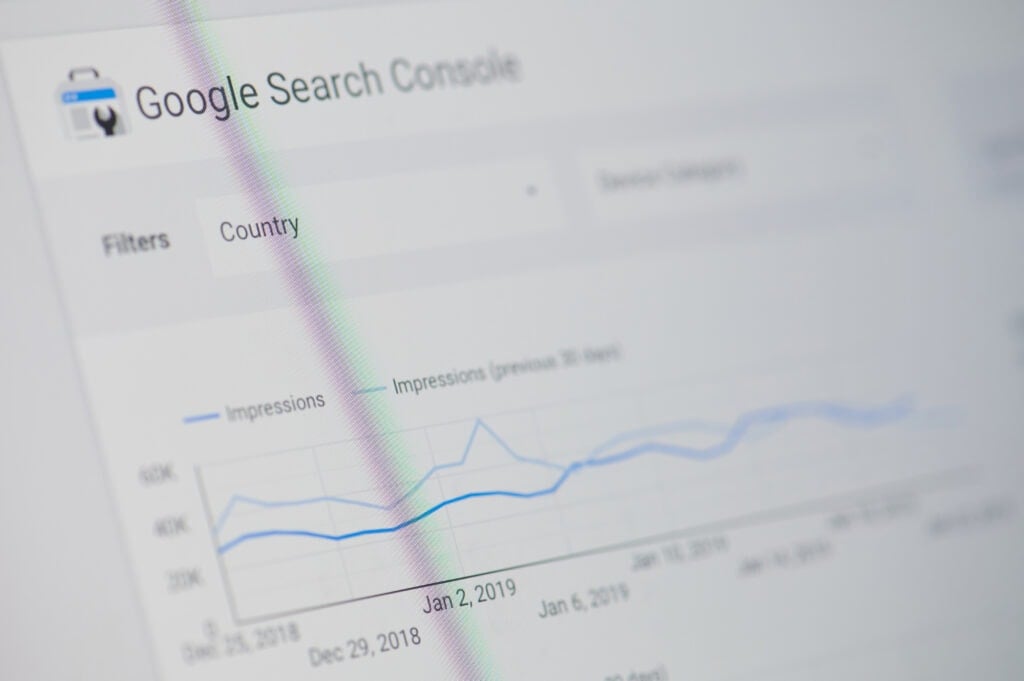Finding success in search engine optimization (SEO) means more than creating content. Don’t get me wrong—quality content is essential. However, holistic SEO requires a proper roadmap.
Roadmaps act as guides. Each step helps us accomplish primary SEO objectives, resulting in better content, improved online authority, and higher ranking.
Here lies the issue—SEO is such a broad term. We’re here to break it down to the fundamentals. By the end of this guide, you’ll get a better understanding of the following:
- Why we do SEO
- The primary objectives of SEO
- Key SEO metrics for success
- Best practices to consider
Why We Do SEO
SEO can be categorized into three main disciplines: On-page, Off-page, and Technical SEO. Optimizing for these disciplines aims to get websites to rank high on search engine results pages (SERP).
But we don’t want to get tunnel vision. Here are the reasons why we do SEO beyond rankings:
Cutting Content Fluff
Google’s primary purpose is to direct users to what they need. On-page SEO guides you on how to cut the fluff to ensure content is relevant, informative, and worth showing on SERP.
This includes optimizing all content-related elements on a website, such as headers, metadata, visuals, and user navigation. The faster users can get to what they want, the better.
Improved User Experience
SEO teaches us that our audience should always come first. This shifts our focus from trying to rank first to delivering quality content and a better user experience.
We can achieve both by showing E-A-T and implementing technical SEO strategies like site-speed optimization, breadcrumb navigation, and mobile optimization.
Showing Expertise, Authority, and Trustworthiness (E-A-T)
More than rankings, SEO helps us become trustworthy and authoritative experts in our niche. EAT (expertise, authority, and trustworthiness) is one of the core ranking metrics.
This applies to the content, the writer, and the site’s overall content. Showing authority, however, can be difficult for newer sites. This is where link building comes in.
Building Links and Relationships
Great SEOs are content creators, developers, and marketers. Off-page SEO helps you forge relationships with webmasters and influencers in your industry to get quality and relevant links.
When reputable websites link to yours, it signals to Google that your content is relevant, valuable, and authoritative. It’s like an online vouching system.
Primary SEO Objectives

SEO is like an onion—there are layers to it. Each layer is more complex than the next. To find success, we need to break SEO down to its primary objectives.
Content Optimization
Optimizing for content means structuring content in an easily understandable way for both humans and Google’s web crawlers. Start with your meta titles, descriptions, and headers.
You want to use three main headers to help users navigate your content: h1, h2, and H3. Use h1 for the title or main topic, h2 for the subtopics, and h3 for subtopics within a subtopic.
Content optimization also includes keywords for our headers, metadata, and overall content. If we want to rank fast, analyzing what keywords to go for first can be one of our main objectives.
This requires keyword research and competition analysis.
Keyword Objectives
Finding relevant keywords for your site’s niche is fundamental to any SEO strategy. Our goal is topical authority—creating libraries of in-depth content branching out from our main keywords.
To help us find the right keywords, we use tools such as Ahrefs or SEMRush. Free tools like Google Keyword Planner can also give us a general idea of what to go for.
When looking for keywords, we consider their volume (how much traffic it gets), difficulty (how hard it is to rank for), and relevancy (how well it fits within the context of our business).
Most SEOs recommend newer sites to focus on low-hanging fruit. But with the right tool, you could find cracks in your competitors’ keyword profiles you can take advantage of.
Competition Analysis
Researching and implementing SEO strategies and finding the right one that fits your business takes a lot of time and resources. So, why not steal what works from the competition?
We’re not saying we steal their content. Instead, we look at their best practices. Aggregate the data, fine-tune it, and make necessary adjustments to fit our strategies.
To make the most out of competitor analysis, use SEM (search engine marketing) tools. These reveal keywords competitors rank for, what they don’t rank for, and where they get backlinks.
Link Building and Brand Awareness
Link-building is where SEOs become marketers and PR people. Remember, Google ranks authoritative and trustworthy sites. One of the best ways to show authority is through backlinks.
There are several strategies you can use for backlink building. Most of these strategies require outreach campaigns like cold emails or building relationships through social media.
Learn how to market your site on different platforms to build brand awareness. You can use link-building tools for this. The more quality links you get, the higher your domain authority.
Improving Domain Authority
Domain authority (DA) is a third-party metric that can be measured with tools like MOZ, Ahrefs, or SEMRush. However, each of these tools has its own factors to calculate DA.
Although DA isn’t necessarily a ranking factor, it shows you how authoritative your site is and how your link-building efforts have progressed. As with all SEO efforts, improving DA takes time.
But there are always things you can optimize in the short term that can result in long-term benefits. A prime example of these is the technical optimizations you can do on your site.
Technical Optimization
There’s a lot you can do when it comes to technical optimizations. Some require developer knowledge, and others you can quickly learn through watching guides or reading how-tos.
For starters, you can optimize your robots.txt file to help crawlers identify what they can or can’t crawl on your website.
Let’s say you have a live test page that isn’t ready for the public just yet. You can set your robots.txt file to ignore indexing on that page so it won’t appear on Google results.
Technical optimization also includes creating optimized URL structure, navigation menus, creating Schema markups, and improving site speed.
Improving Site Speed
Google uses site speed as one of its ranking factors. To test site speed, use Google’s Page Speed Insights tool. It runs a quick site audit, measures page speed, and shows you how to improve your metrics for both mobile and desktop users.
Common strategies include using plugins that boost site speed, optimizing images by converting them to modern file types like WebP, and caching. You want faster page speeds, especially on mobile.
Improving site speed improves user experience, boosts rankings, and reduces bounce rates.
Decreasing Bounce Rates
Disregarding how short-form media gutted our attention spans, slower page speed makes users more likely to click away from our site. But there are other optimizations we can do to decrease bounce rates aside from page speed.
We can structure our content better, improve navigation, and make our site easier to search. Doing so decreases bounce rates and helps improve our overall traffic and the time users stay on a page.
Boosting Traffic and Time on Page
Let’s say you have a keyword ranking high on SERP. Chances are, a lot of users are going to click on that page. You want to keep these users engaged now that they’re on your site.
Users who find value in your content stay longer, are more likely to share your content and are more likely to explore your site. We can aid them through optimized internal linking.
Optimized Internal Linking Structure
Internal links guide your audience on what to read next. Some concepts and ideas can’t fit within the confines of an h3 header or subtopic and need their own space to shine.
This is where an optimized internal linking structure comes into play. Four main ones to consider include: contextual, navigational, footer, and sidebar links.
We need to choose quality anchor texts to optimize our internal link structure. These are words or phrases relevant to the page you’re linking.
For example, an article about “How to Take Care of Stray Kittens” could have an H2 header about “What to Feed Stray Kittens.”
The anchor text could be “best milk formula brands for kittens,” which directs you to a page with an extensive list of kitten formula brands.
Not everybody has a site dedicated to caring for cats. That’s why one of the most important SEO objectives is the creation of tailored strategies.
Tailored SEO Strategies
Search engines like Google constantly evolve to provide a better user experience. SEOs need to adapt. The best way to do so is through dynamic SEO strategies.
Here’s the catch—Google comes second. Your audience comes first. So, it would be best to tailor your strategies, especially content, to your audience and business model.
But SEO that works for other businesses might not work for you specifically. Fundamentals will.
For example, a site selling wet cat food might benefit more from local SEO strategies. However, a business in SaaS might need aggressive backlink building or paid Google Ad strategies.
Still, both sites need to have fundamentals like fast site speed, easy navigation, and great content. More importantly, both need to align SEO with business goals.
Aligning SEO with Business Goals
Aligning business goals with SEO helps you answer the question, “Why do you need SEO?” If you don’t know where to start, try strategies like SMART goal setting.
The SMART methodology helps you create specific, measurable, achievable, relevant, and time-bound goals. Once you’ve set your goals, you need a way to measure success.
Interpreting Data: Key SEO Metrics for Success

The best part about SEO is its data-driven nature. With the right tools (Google Analytics, Search Console, or SEM tools), you get all the data needed to measure success.
We can use over a dozen metrics to measure our SEO campaigns’ success. But for most businesses, here are five of the most important metrics to look out for:
New Referring Domains
Building backlinks is one of the most important aspects of SEO, as it is a direct ranking factor. But backlinks from the same domain get you diminishing returns.
You want to build new backlinks from relevant, high-quality domains as you grow. To measure the success of your link-building campaigns, conduct regular backlink audits.
See where you’re getting your new referring domains from. Find similar sites. And continue building a healthy backlink profile through outreach and linkable content.
Keyword Rankings
A clear indicator of SEO success is keyword ranking. You want to rank high on “branded” keywords. These keywords include your business name or niche terms specific to you.
More importantly, you want to rank high on keywords relevant to your industry. For example, if you’re an eCommerce site selling sports apparel, you might want to rank for “men’s gym shoes.”
You can use tools like Google Search Console, SEMRush, AHrefs, Mangools, and a number of other SERP trackers.
Impressions
You get an impression each time you end up in a search result, even if a user didn’t click on your site. Impressions are an early sign of SEO success.
You’re not getting traffic yet, but Google already recognizes you exist. Once you hit the top of SERP, expect your impressions to balloon.
To track impressions, go to Google Search Console’s “Performance” tools.
Click-Through Rates (CTR)
CTR measures the ratio of impressions to clicks. Let’s say 1000 users see your article on SERP. If 100 users click your page, you get a 10% CTR.
The higher your keywords rank, the higher your CTR becomes. You get more clicks if you rank within the top 3 search results. If your keyword ranks 1st, it could get 39.8% of the clicks.
You could also track CTR on the Search Console’s Performance tool.
Organic Traffic
Every SEO campaign aims to bring more traffic to a site. If you see no improvements in organic traffic, underlying issues need to be addressed. Remember, an increase in organic traffic results from quality content campaigns, link-building, and technical SEO efforts.
For example, poor site speed can instantly cause users to skip your site, even with great content and backlinks. So, look at your data and identify what needs remedying.
Organic traffic can be tracked using Google Analytics or SEM tools.
Conversion Rates
Conversion rates are where SEO and Business goals align the most. We want traffic to convert into paying customers. This is where customer and content quality comes in.
Let’s say you have high organic traffic but poor conversion rates. The issue could be that you’re attracting the wrong customers.
The keywords you’re ranking for might not be relevant to the customers you want. Or, maybe the issue lies with your call-to-actions.
Experiment, find what needs adjusting, and iterate on what works.
Key Takeaways
SEO is a long journey. There’s a lot to do, and results are seen in the long term. However, understanding the 12 primary SEO objectives gives a clear roadmap for success. To make the most of this journey, remember the following:
- Align SEO with your business goals
- Optimize for content relevant to your niche, business model, and audience
- Set keyword objectives and slowly build topical authority
- Steal best practices from competitors through competition analysis
- Learn basic technical SEO like site speed optimization to decrease bounce rates
- Measure success with relevant key performance indicators (KPIs)
Get in touch with the team at Spacebar Collective if you’re looking to fast-track your SEO objectives!






